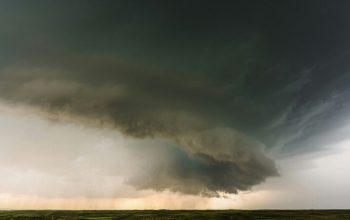Where and how students have been educated in the Eagle Grove area is just as different as the students themselves over the last century. Since the current Eagle Grove High School building turns 100 this year, we thought we would take a look back as to how it all came to be.
It is said that Pioneer children attended a country school on the west side of town (envision Little House on the Prairie). In September of 1881, the first in-town classes were held for younger children in a small building located on East Third Street North under the direction of Attorney Aaron Yearous. On the west side of town, Henry Cole held high school classes in a store building. Anyone who could read in the “Fourth Reader” could attend the high school.
Back in those days, it was not uncommon for children, especially the boys, to not attend school regularly throughout the year. Instead, they would miss class in order to help on the family farm during planting and harvest season. Girls were most likely to miss school during canning season to help their mothers prepare food for winter. For these reasons, Cole was paid less in the fall and spring months (there were less students to teach) making only $30/month. In the winter, he was paid $35 because there were more students. The first official school building built in Eagle Grove was located on S. Cadwell and went up in 1882. Three grades were taught in that building. In 1883, the first School Board was elected, and it was these six people who decided classes would be held nine months out of the year.
In 1883, a one-room school was built for the kids on the east side of town. It was put on the corner of Jackson and North East Second St. It became known as the “Little Green Schoolhouse.”
In 1886, the west side one-room schoolhouse was sold and a new four-room school building was put up instead. The West Side School was located at NW Second St between Cadwell and Iowa. A woman, Jennie Rudolph, was hired as the town’s first Superintendent of schools, earning $800 per year.
Also in 1886, Eagle Grove schools decided to organize under one collective school system. A three-year study course was offered to high school students who met in the south portion of the West Side School. Miss Maude Poole is believed to be the first graduate of this three-year program on May 31, 1890.
As the years past, more kids came. In 1888, the East Side School was sold so a four-room school could be built. By 1889, there were 752 students enrolled in Eagle Grove Public Schools.
In 1892, the Board of Education passed a resolution that the West Side School would be known as the Lincoln School and the East Side School would now be referred to as the Garfield School. Class sizes still continued to grow and in 1894 a four-room addition was built onto the Lincoln School. Two years later, four rooms were also built onto the Garfield School.
In 1901, McKinley High School, a new three-story, yellow brick building was constructed near the Lincoln School. It was considered “one of the finest” in the area. That is also when Eagle Grove schools formed their first organized extra curricular activity – football.
By 1920, McKinley High School was bursting at the seams. The children protested the overcrowded classrooms by walking up and down the streets of town with a banner that read, “We feel like basement rats and church mice.” This forced the school to rent additional spaces to teach students. These classrooms were located in churches, the public library, and even in downtown stores.
That same year, they tore down the old Lincoln Grade School and began construction on a new, bigger high school (it opened for classes in September of 1921). The 1920 cornerstone can be found just to the right of the south center doors, marking it’s proud 100 tradition of outstanding education and extra curricular activities. The cost – $165,000. The old McKinley High School building became the West Side Grade School which the junior and senior high school boys tore the third floor off of to stabilize the building.
That very same Eagle Grove High School building built in 1920 is still in use today…with some changes, of course. In 1948 the City passed a bond issue for the addition of a boiler room, a shop instruction area, and a new gymnasium that replaced the old one that was originally in the basement. It is said that the old balcony bleachers are still in that basement, they have just been boarded up.
The new, bigger, brighter Eagle Grove High School gym has been an asset to the district. It has graced the presence of many Eagle Grove fans and athletes, including Gene Hinrichsen, a senior quarterback who passed away after an injury sustained in the 1953 EGHS Homecoming football game. In addition to being an outstanding football player (which the high school football field is now named after him), an Eagle newspaper article regarding the game and the injury said he was also described as “the best basketball player in Eagle Grove history.” Hinrichsen’s photo still hangs in the EGHS gym today to honor his memory.
In 1971 another addition was made to the high school which included vocal and instrumental music rooms, a wrestling facility, office, storage, and a weight room – which was updated again at the turn of the 21st Century.
Many outstanding people have walked the hallways of Eagle Grove High School over the last century. In addition to Hinrichsen, there have been state wrestlers, baseball teams, track teams, drill teams, cross country teams, and softball teams. There has been Conference Champs basketball teams, and an undefeated football team in 1955. There have also been individual champions from these teams as well. Well-known business owners, politicians, and military personnel have also walked the hallways, leaving a legacy behind for future generations to aspire to.
There’s no denying population has changed over the years, and there was even a time not so long ago that some people wondered how small town schools, like Eagle Grove, would survive without some type of consolidation. But it looks like history is repeating itself from 100 years ago as Eagle Grove is excited to once again be seeing student population increase over the past several years. A new elementary building was put up adjacent to Robert Blue Middle School in 2007, not due to student population increases, but more so to replace the dilapidated school buildings of Lela Howland (kindergarten and first grade built in 1949) and Lincoln Elementary (second – fourth grade built in 1951). Ten years later, a $6 million elementary addition and Robert Blue Middle School renovation project began in September to make way for more anticipated students coming into the district due in large part to the building of Prestage Foods of Iowa just south of town. That has brought families to our town, and therefore the need for more room to teach our town’s children. While the high school remains untouched, there has been some conversation that more room will be needed soon as elementary and middle school students with large class sizes move up in age. Several options have been discussed, but no decisions have been made at this time.
Information for this story was gathered from the Eagle Grove High School Alumni Album published in 2006, the Eagle Grove Centennial book, and local historian Ron Mohr.







